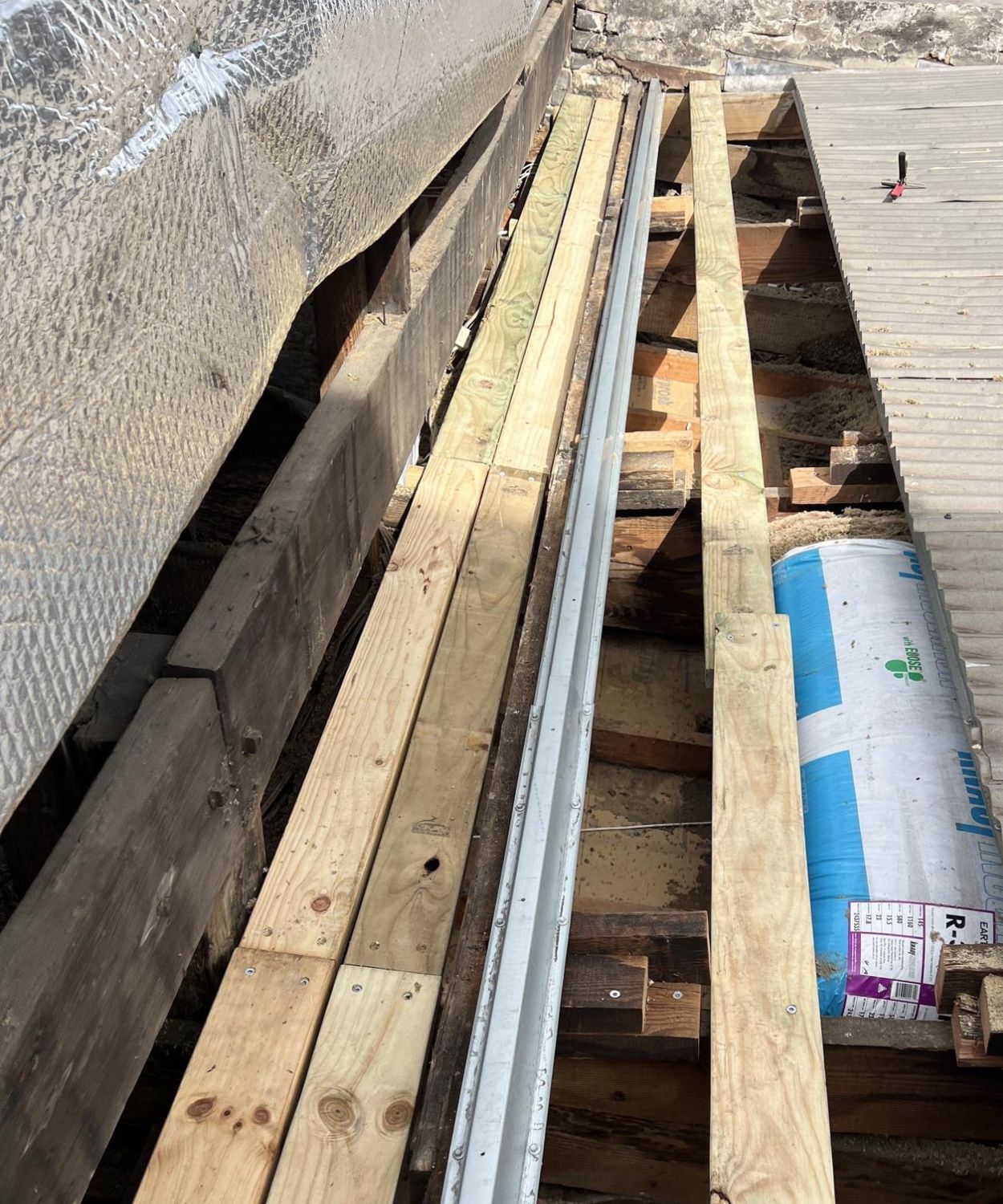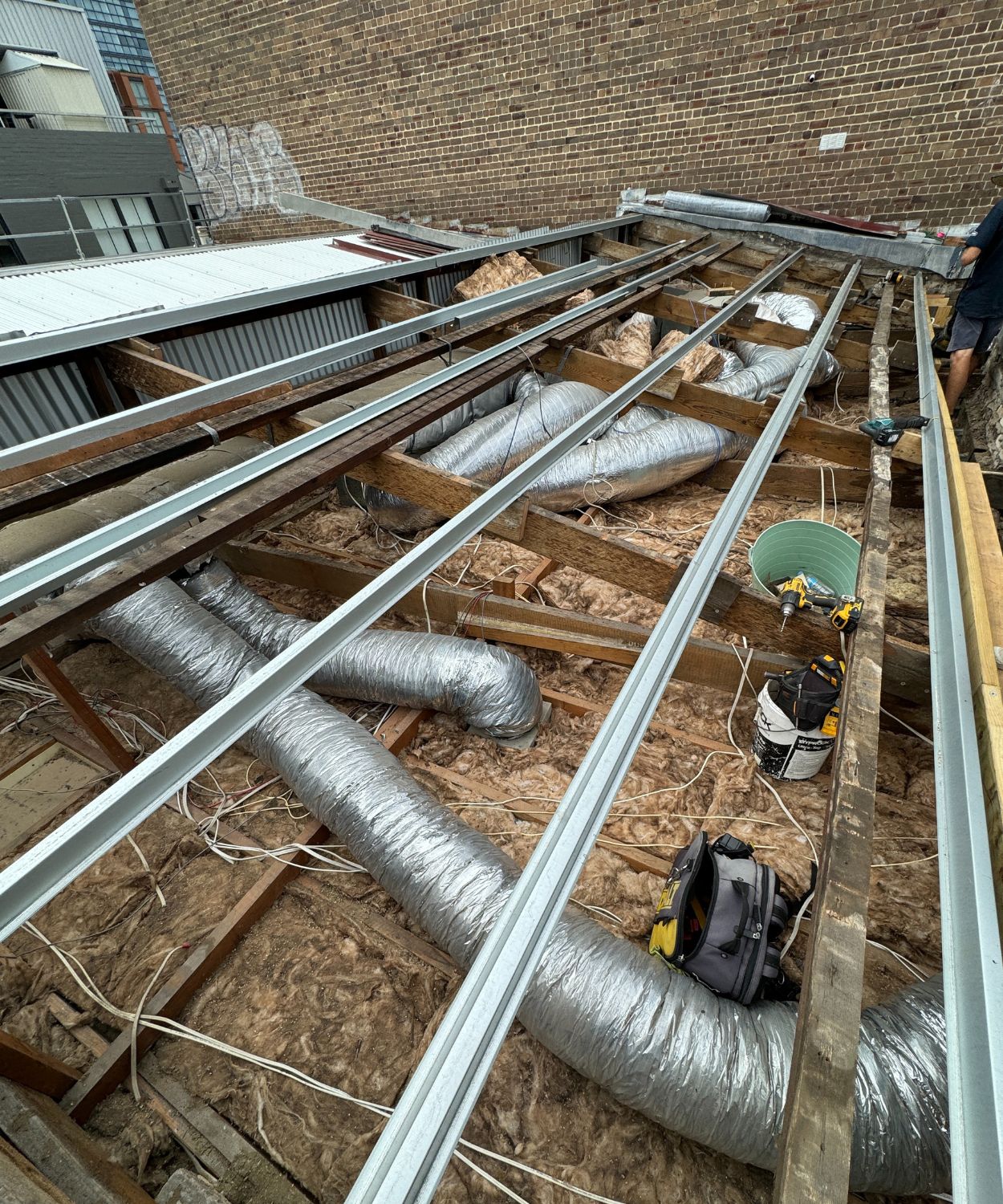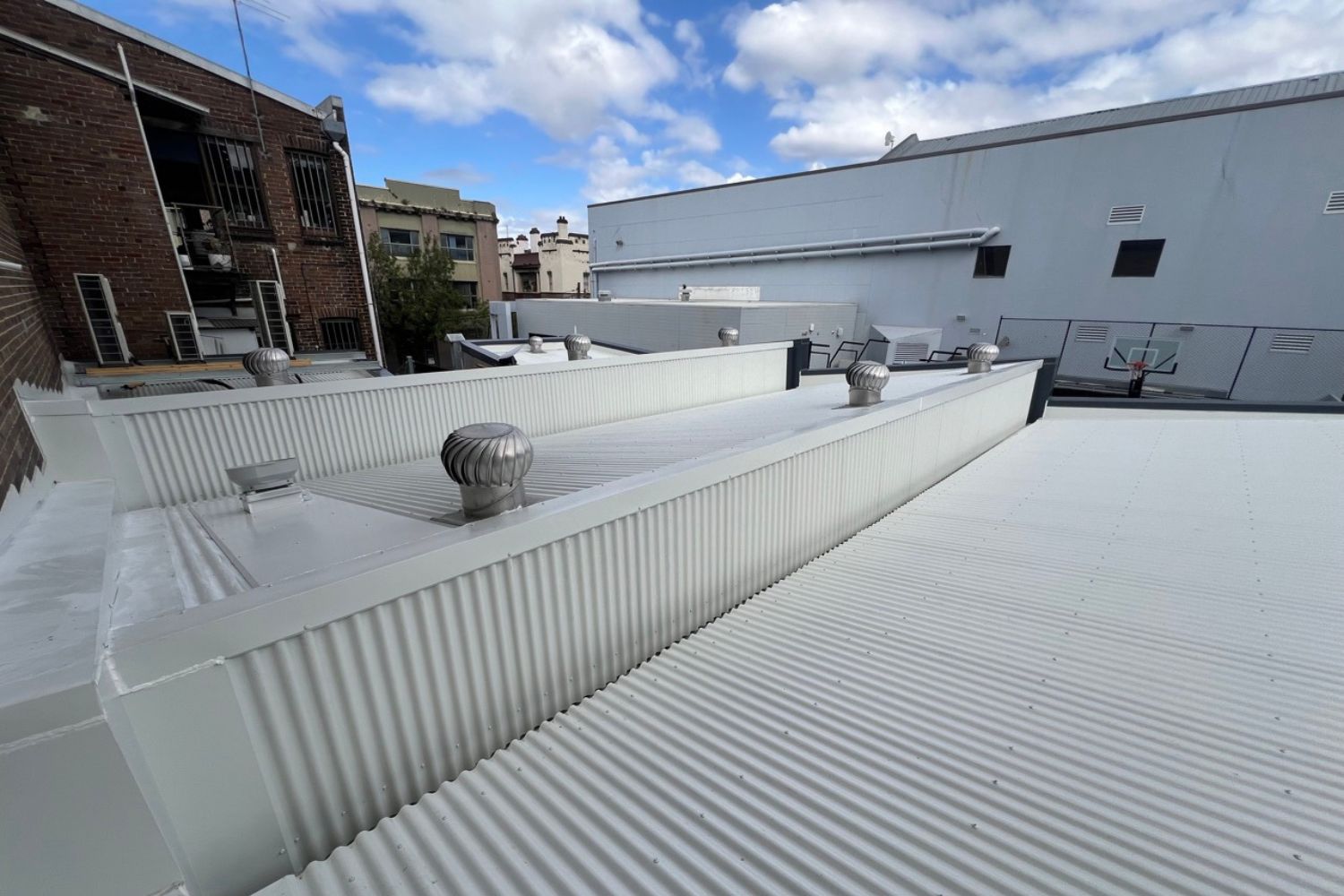Case Study
CONCRETE SPALLING REPAIR
SUCCESS STORY
CLIENT PROFILE
Client: Henrietta Street Trust
Sector: Class 5 Office Building
Location: Chippendale, Sydney
Project Value: $200,000
Background: During heavy rains, the tenants were faced with uncontrollable leaks and instances of ceiling collapse caused by a deteriorating metal roof and rusted box gutter.
.jpeg)
A Ticking time bomb
Water ingress, once detected, should never be underestimated, as it has the potential to escalate into a much larger and more expensive problem.

Mould Infestation Health Risk

Compromised Structural Integrity

Increased Financial Repair Costs
OUR QUALITY GUARANTEE
Adhering to Australian Standards for roof replacement was non-negotiable.
We approached the task with a commitment to quality, ensuring that every aspect of the repair work met these rigorous standards.
To provide the Owners with peace of mind and underscore our confidence in our work, we offered a substantial 10-year guarantee.

Adherance to Australian Standards 1562.1 Installation of Metal Sheet Roof and Wall Cladding

Adherance to AS 3500: Plumbing and Draiange

Workmanship and Materials Guarantee

Minimise downtime and protect the exposed roof

To mitigate weather-related risk, we adopted a staged approach

With forecasted wet weather, the project demanded swift execution
OUR OBJECTIVE
In the face of unforgiving rains, we were faced with 2 options;
1) Let the ceiling collapse or
2) Work admist the rain with a robust strategy
Our objectives were: stop water ingress and safe guard the buildings interior from moisture.

Box Gutter & Sump Upgrades

Purlins & Roof Clean

Sarking & Roof Sheeting

Capping & Flashings

Spray Testing
Construction METHODOLOGY
Our construction methodology followed a staged approach where by at the end of each day, we reinstated the old roof sheets to mitigate weather-related risks.
During the course of the project, our superintendent conducted regular quality assessments to verify the effectiveness of our workmanship, ensuring that the application was compliant and leak-free.
1. Box Gutter Upgrades

Installation of Box Gutter SupportsReplace severely deteriorated and moisture-damaged sleepers with like-for-like.

Increase Box Gutter CapacityInstall new Colorbond 270mm (w) x 100mm (h) with built-in 1:100 falls to allow free-flowing water during heavy rain events

Install New Sumps with Mesh Guards:Install new 600mm (l) x 270mm (w) x 200mm (d) sumps with mesh basket leaf guards to slow down water flow into downpipes to prevent back-charging into internal areas

2. Purlins & ROOF CLEAn

Clean Roof Cavity:Remove and dispose of existing roof insulation and vacuum clean the roof cavity to make way for new isulation.

Installation of new purlins:Replace all existing purlins with new Lysaght Zinalume Purlins at 800mm c/c to guarantee falls to roof sheets and to allow larger box-gutters

3. Sarking and METAL sheeting

Install new Sarking & Insulation:Install new vapour permeable sarking and insulation batts to decrease heating and cooling costs

Install new Drainage Battens:Start Install new drainage battens to between sarking and roof sheeting to facilitate air and moisture flow.

Install New Metal Roof Sheeting:Apply caulk at corners and edges where tiles meet other materials or fixtures to ensure a watertight seal. Install any trims to protect tile edges to create a clean transition to adjacent surfaces.

4. cappings and DETAILING

Install new step flashings to adjoining building:Rake out existing brick joint and recess install our flashing into the building. Install polyurethane to seal.

Install Perimeter Cappings:Double seal install all cappings beneath and over laps to ensure zero moisture penetration. Our cappings were installed with a double drip-groove to eliminate any chance of capillary action.

Detail Roof Penetrations:We had 3 types of roof penetrations: AC Services
Threaded Rods, Vents.
1) AC Conduits were detailed by pulling the cables through a supported 1-way PVC pipe
2) Threaded rods were embeded in epoxy and oversealed
3) Vents were detailed with dektites, hose-clamps and top-sealed with Sikaflex Pro.
.jpeg)
PROJECT OUTCOME

Compliance: AS1562.1: Metal Roofing & Cladding

Structural Integrity: Extended lifespan

Reduced Premiums: Reduced Insurance Risk

Peace of Mind: Workmanship Guarantee

.jpeg)
Client: Owners Corporation
Sector: Residential Construction
Location: Vaucluse, Sydney
Project Value: $35,000
Background: Kevin faced a critical challenge - a deteriorating concrete pool affected by spalling and honeycombing. Safety, quality and aesthetics were at stake.

The concrete spalling issues affecting Kevin's pool manifested along the pool's edges, where it reached a critical point, causing concrete to disintegrate, exposing the steel reinforcement.
The severity of the situation became apparent when the structural engineer assessed the pool's condition, deeming it unsuitable for certification to AS3600: Concrete Structures.



Concrete spalling, once detected, should never be underestimated, as it has the potential to escalate into a much larger and more expensive problem.

Safety:Deteriorating concrete could have continued to dislodge, posing a danger to anyone using the pool area.

Structural Integrity:Over time, untreated spalling can compromise the structural integrity of the affected area.

Increased Costs:Delaying the inevitable repair will always result in more damage that would require more extensive and costly interventions.
Adhering to Australian Standards for concrete spalling repair was non-negotiable.
We approached the task with a commitment to quality, ensuring that every aspect of the repair work met these rigorous standards.
To provide Kevin with peace of mind and underscore our confidence in our work, we offered a substantial 6-year guarantee.

Adherance to Australian Standards 3600: Concrete Structures

Adherance to ACRA: Guide to Concrete Repair

Workmanship and Materials Guarantee

Site Establishment in one week

Project completed in just one week

Prioritised safety throughout repair process
Time was of the essence.
The deteriorating state of his pool required immediate attention.
Our team, embarked on the project with the goal of delivering swift results without compromising safety.
In just one week, from the project's commencement to its completion, we successfully restored Kevin's pool to its former glory.
Unforeseen concrete spalling repair projects can put a strain on budgets. Our limited budget prompted us to think innovatively.
We opted to use micro-concrete instead of patch repair, enabling us to maximize the scope within the given constraints.
This strategic approach not only optimized costs but also expedited the repair process, minimizing inconvenience for Kevin

Optimised cost using innovative concrete repair methods

We used pourable micro-concrete instead of repair mortar

Completed extensive repairs within budget


Our concrete spalling repair methodology strictly followed ACRA: Guide to Concrete Repair.

Surface Preparation

Reinforcement Priming

Concrete Application

Concrete Finishing

Assessment: Conducted a thorough assessment of the concrete spalling to determine the extent of damage.

Cleaning:Removed loose concrete, dirt, and contaminants from the affected areas to ensure proper adhesion of the concrete repair material.

Surface Profiling: Prepared the surfaces to achieve the necessary texture for optimum bonding between the existing concrete and the repair material.





Evaluation: Assessed the condition of the underlying steel reinforcement to identify areas requiring attention.

Priming: Treated and primed the steel reinforcement where necessary to prevent further corrosion and ensure structural integrity.

Compatibility: Ensured that the priming materials used were compatible with the micro concrete for a durable bond.

Precise Application: Applied the micro concrete meticulously to the affected areas, utilizing specialized techniques to achieve a uniform and structurally sound surface.

Material Selection: Opted for micro concrete due to its exceptional durability and compatibility with the existing concrete.



Aesthetics: Focused on restoring the aesthetic appeal of the pool by smoothing and finishing the repaired surfaces.

Texture Matching: Ensured that the repaired areas seamlessly matched the surrounding concrete, achieving a visually consistent appearance.

Final Inspection: Conducted a final inspection to verify the quality of the finishing and overall repair work, maintaining our commitment to excellence.



Enhanced Safety: Eliminated Risk of Concrete Falling

Structural Integrity: Extended Lifespan

Compliance: ACRA: Guide to Concrete Repair

Peace of Mind: Workmanship Guarantee



